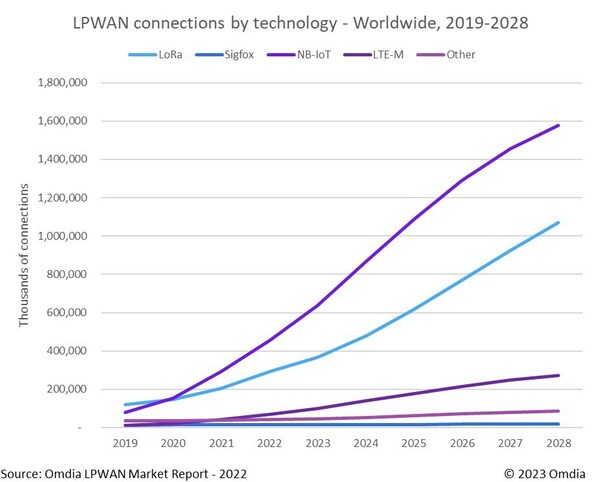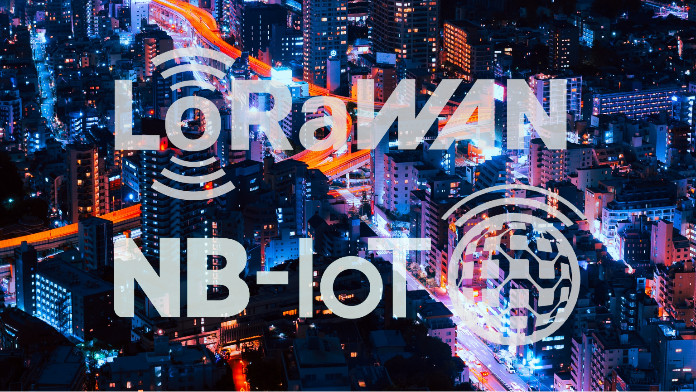New research from analyst house Omdia says the number of low-power wide-area (LPWA) IoT network connections will grow at a compound annual rate (CAGR) of 23 percent in the period to 2028, driven mostly by growth in NB-IoT and LoRaWAN technologies. NB-IoT and LoRa will account for 87 percent of all LPWA-stype IoT connections in 2028, it reckons.
Omdia calculates these two technologies own 85 percent of global LPWA-IoT connections, today; so their market-share growth is just two percentage points. But the five-year CAGR forecast for the LPWA networking market, at 23 percent, points to significant growth in the period, and suggests they will over-index in terms of their combined growth, and drive the overall market forward.
Shobhit Srivastava, senior principal analyst at Omdia, said cellular-based NB-IoT and non-cellular LoRaWAN, more than LTE-M and Sigfox, their traditional rivals respectively, are in the “sweet spot for mid-range IoT applications”. He said: “With sufficient differentiation between the two technologies, both are on track for success through the end of Omdia’s forecast in 2028.”
The NB-IoT story remains a parochial one, mostly restricted to China, where more than 90 percent of global NB-IoT connections resided at the end of 2022 – and commonly deployed for stationary use cases like utility metering and smart-city monitoring. Srivastava commented: “Outside of China, the adoption of the NB-IoT has been slow… China will continue to be the main driver of NB-IoT adoption in the foreseeable future.”
But renewed focus on NB-IoT in Europe suggests there is life for NB-IoT beyond China, too, said Omdia, noting that operators like Telefonica and Deutsche Telekom are investing in satellite-based NB-IoT to cover remote areas and that government agencies like the DGT, the national traffic authority in Spain, will deploy NB-IoT for warning beacons from 2026.
Of LoRaWAN, Omdia concluded: “LoRaWAN has had several years of unchallenged growth, building momentum, and gaining maturity. Its success in the future remains as it has differentiated offerings and a value that NB-IoT cannot easily match. LoRa has unmatched accessibility for companies deploying IoT applications. This accessibility has made LoRaWAN one of the favorites of small developers, the maker community, and over-the-top IoT networks.”


